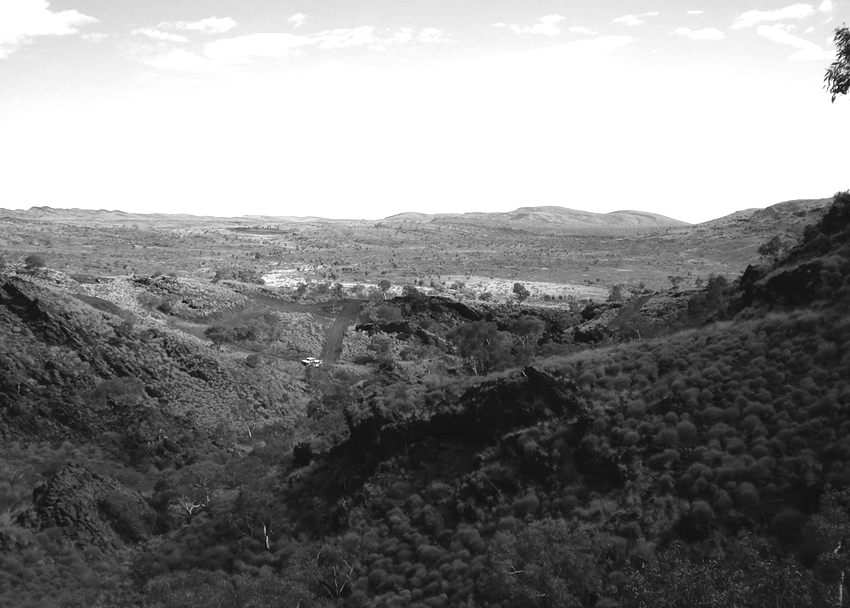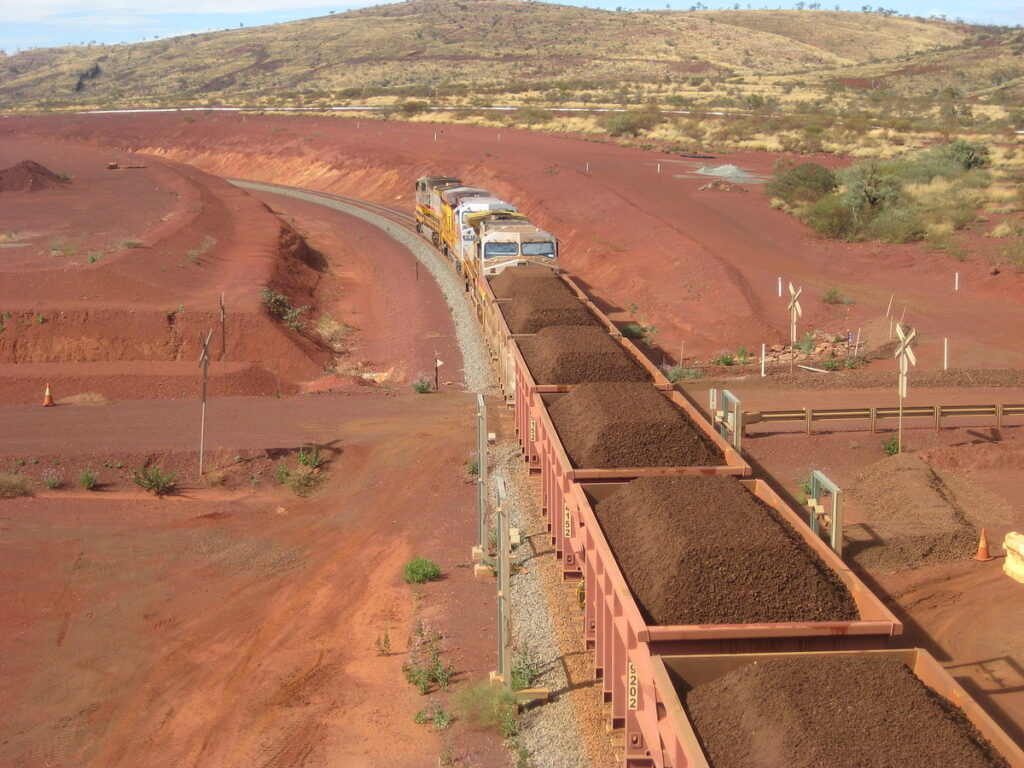
On Sunday May 24th 2020 Rio Tinto blew up the Juukan Gorge rock shelters in Australia, which ancestors of the Puutu Kunti Kurrama and Pinikura (PKKP) people occupied over the course of 46’000 years. This in order to expand their Brockman 4 iron ore mine in the Hammersley ranges.
The fall out from media, investors, stakeholders, indigenous peoples, politicians, to just name a few, has been extraordinary. The foreseeable consequences for the company and those in charge so far do not look like they will be of equal formidable dimensions.
Look and feel of the mine:
A short 2010 video guided tour by one of the digger drivers.
A 10′ drive around the iron ore mine.
What can we learn from the Juukan Gorge disaster?
There are a multitude of lessons to be learned from the entire process that lead to the disastrous blast of a site of such archaeological importance. But also from the scrutiny in its aftermaths.
Here a selection of a just few to think about:

- Compliant ≠ Ethical:
Just because the law says you are right, does not mean that what you are entitled to is ethically or morally or by any other standard, ‘right’. Or as the saying goes:
Doing something wrong perfectly well, makes it perfectly wrong. - Company HQ location – and the culture that comes with it – matters.
In the case of Rio Tinto, the company centralised more and more functions in its London HQ, reducing Australian presence significantly, other than for mining activities. This included the engagement with indigenous peoples in all the different mining locations. With London clearly taking a Western European (and very British at that) view, Australian cultural sensitivities and indigenous peoples’ rights were overlooked or classed as ‘of lesser importance’. - Engagement ≠ Engaged
Rio Tinto, like all extractive industry players with mines in – what the everyday John Doe would consider – questionable geographies, is requires to formally engage with indigenous communities. And they do.
But evidently so it is not a process they perceive as important, valuable or beneficial. By all accounts and purposes, what surfaces at this moment suggests that it is a tick boxing exercise, brushing a white colonial and racists business culture under the carpet. - Doing things right vs doing the right things:
Rio Tinto’s internal process culture had a very focused, very outcome oriented character in which the its identity as an extractive company and its financial success was the dominating tenor.- Necessary business due diligence requirements, such as archaeology studies, were seen predominantly as a hurdle – of financial, administrative, logistics nature – in achieving their goals, and a drain on financial bottom lines, which ideally should be avoided.
At no point the PKKP’s demands to review the blasting plans were considered as legit, even though alternative scenarios were available (and in fact also had been scenario’ed; see also previous point above).
- Necessary business due diligence requirements, such as archaeology studies, were seen predominantly as a hurdle – of financial, administrative, logistics nature – in achieving their goals, and a drain on financial bottom lines, which ideally should be avoided.
- Non-financial responsibilities are harder:
harder to measure, harder to execute, and harder to understand when they are successful. But they are at the very least equally important.- In this case, and example: there was no identified recipient for the 2 archaeological reports whose responsibility it would have been to ensure that the top management is aware of the location’s historical importance. The content of the two reports in its full significance never reached the company’s top management.
The last, but probably saddest learning though so far is:
The company will get away with it. At least for now.
And even the executives made responsible for the disaster won’t suffer severe backlashes – they will be out of a job, but with millions at hand to spend to organise their newly gained spare time.
There is a small chance that investors, and notably the large superannuation funds, will keep pressure up. And maybe – with a bit of luck – also the Australian government may have finally woken up to its outdated laws and lacking protection of its indigenous heritage.
But just maybe …
Learn more about the scientific value of Juukan Gorge:
Slack, Michael & Fillios, Melanie & Fullagar, Richard. (2009). Aboriginal Settlement during the LGM at Brockman, Pilbara Region, Western Australia. Archaeology in Oceania. 44. 10.1002/j.1834-4453.2009.tb00066.x. (free PDF download).
The Juukan Gorge Drama as documented in the news
o) Mining permission – and with it the destruction of the site – was granted in 2013 by the government of Western Australia under Section 18 of the Aboriginal Heritage Act WA (1972)
The current law does not require re-assessment of the permission in the light of newly emerged scientific or other evidence.
=> Legally at least, Rio Tinto was technically entitled to blast the sight.
o) However, only in 2014 the preliminary report of the archaeological assessment of the area was published (and handed to Rio Tinto), the full report not being available until 2018. Two further reports ethnographic reports added further evidence to the same extent.
—–> Important: while the report had been finance by Rio Tinto itself, both the preliminary report as well as the final report both not only cited unequivocal evidence that the rock shelters were at least twice as old as previously estimated, but also classed it as of “highest archaeological significance in Australia”.
o) The reports outlined alternatives to the blowing up – a fact entirely ignored, and never communicated to the PKKP.
Ever since, the PKKP – and other stakeholders – had repeatedly made public calls for the rock shelters to be protected. The latest such meetings had taken place around mid-May.
o) Minutes released from meetings with the company’s CEO on May 21 and 22 (hence prior to the blasting) indicated that the company’s chief council had contracted a law firm to prepare for and fight back on potential legal injunctions that were expected.
o) After the blast, the CEO claimed however that he was not made aware of the culturally-historical value of the Juukan Gorge 1 and 2 rock shelters until the evening of May 24th, i.e. after the blast (albeit he had been made aware of ‘a potential issue’ 3 days prior to the blasting).
o) In June the company offered apologies and stated that year-end 2020 bonuses and Q1 2021 bonuses would not be paid to the people in charge.
o) Only after very severe pressure by some of the largest super annuation funds (in Australia and elsewhere), and a range of other shareholders, finally on 11 September 2020 it was announced that three executive were being removed: the CEO, the iron ore head and the head of corporate affairs. And while the company is not to pay them the upcoming bonuses, they will be entitled to other future bonuses as per prior agreement.
o) The case is not finished as of yet, with the Australian parliamentary enquiry’s report not to be expected before December 2020.
o) At the same time, key investors are keeping the pressure up.
o) Also, voices are getting louder that Section 18 of the Aboriginal Heritage Act WA (1972) is needs reviewing, notably in comparison with Australia’s (19th century) colonial heritage being protected, the much older Aboriginal sites’ protection scores badly.

